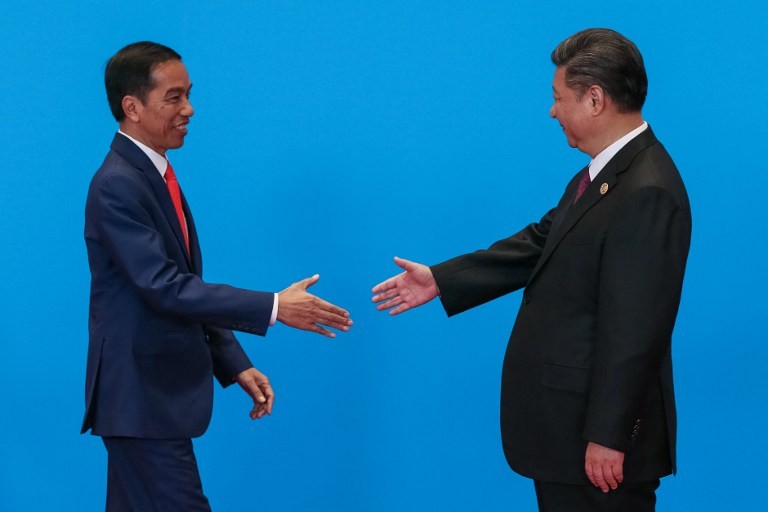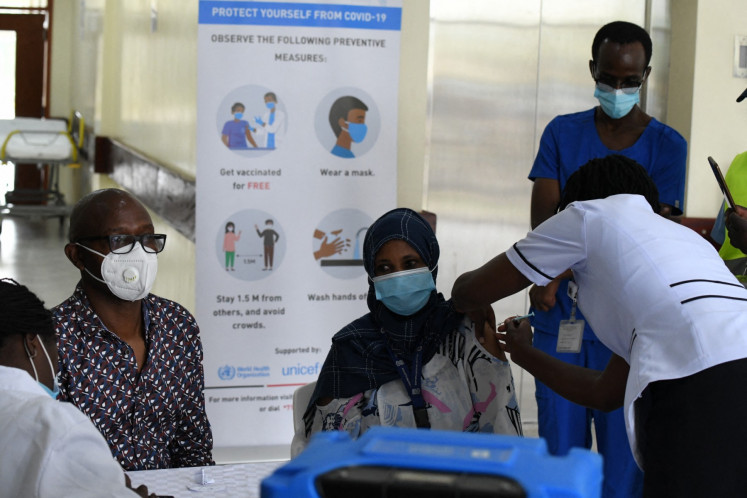Popular Reads
Top Results
Can't find what you're looking for?
View all search resultsPopular Reads
Top Results
Can't find what you're looking for?
View all search resultsWhy BRI-GMF cooperation benefits China and Indonesia
It is evident that bilateral cooperation within the BRI and GMF creates no “trap”, but only unlimited opportunities.
Change text size
Gift Premium Articles
to Anyone
T
he Jakarta Post published the article “The struggle to define the Belt and Road Initiative in Indonesia” on July 29 and “How Indonesia can avoid the pitfalls of Belt and Road cooperation” on July 30. Some points raised in the two articles need clarification.
Initiated in 2013, the Belt and Road Initiative (BRI) intends to promote synergy among the development strategies of different countries, tap into the market potential within the region, promote investment and consumption, create demand and jobs and increase people-to-people exchanges and mutual learning between civilizations, all in an effort to cultivate understanding and mutual respect among peoples of different countries and share a life of harmony, peace and prosperity.
In 2014, President Joko “Jokowi” Widodo proposed the Global Maritime Fulcrum (GMF) vision, which relates profoundly to the concept, goals and areas of the BRI.
President Xi Jinping and President Jokowi thus reached an important consensus on promoting synergy between the BRI and GMF, for the benefit of the peoples of both countries.
In terms of infrastructure connectivity, China supports the building of the maritime highway proposed by President Jokowi and has participated in strategic and major infrastructure projects in Indonesia such as roads, railways and ports.
The Jakarta-Bandung high-speed railway (HSR) is the flagship project of the first stage of strategic alignment.
In addition, the two sides have begun intergovernmental cooperation on the Regional Comprehensive Economic Corridor, which is the flagship project of the second stage of strategic alignment, of which some early-harvest projects are well underway.
The cooperation between China and Indonesia is mutually beneficial in nature. Synergizing our respective development strategies has brought high-quality Indonesian products for ordinary Chinese consumers, outstanding Indonesian students to Chinese colleges and universities, reliable partners and broader prospects for Chinese businesses.
Overall, synergizing our respective development strategies has created favorable conditions for China’s development and brought many development opportunities for Indonesia as well.
The first is to promote the balanced development of different regions in Indonesia. The Jakarta-Bandung HSR will not only shorten commute time between the two cities from more than three hours to about 40 minutes, but also create an economic belt and change people’s perceptions and ways of commuting, thus driving growth along the way.
The Regional Comprehensive Economic Corridor will help Indonesia to develop islands apart from Java.
The second is to ease the financial burden, increase financial resilience and create new jobs. China’s investment will help to ease Indonesia’s financial burden in terms of infrastructure building, human resource development and social welfare projects.
By expanding the current swap between the two countries, Indonesia will enjoy better resilience against financial risks and maintain a stable currency.
The two-way investment, trade and personnel exchange creates new job opportunities for Indonesia. For instance, Huawei Indonesia now has more than 2,500 staff and local staff members account for 86 percent of the workforce.
The Jakarta-Bandung HSR, as another instance, has created about 8,000 jobs and the Qingshan Morowali Industrial Park in Sulawesi has created more than 30,000 jobs for the local communities.
The third is to expand Indonesia’s exports to China. In recent years, Indonesia’s exports to China outpaced the growth of overall two-way trade and Indonesia’s imports from China. Export of quality products to China, including palm oil, coal, mangosteen, dragon fruits and others has been expanding steadily.
The fourth is to boost human resource development. Last April during Vice President Jusuf Kalla’s visit to China, the two sides signed a memorandum of understanding for coestablishing a China-Indonesia Joint Research Center on High-speed Railway Technology. This is significant for it helps to improve Indonesia’s capability in the area of high-speed railways.
Plus, Tsinghua University of China has set up an East Asia research center in Bali, which will also help with Indonesia’s human resource development for Industrialization 4.0.
The BRI stays true to the principle of extensive consultation, joint contribution and shared benefits and is committed to the market approach from project selection to financing. Decisions are made by all stakeholders.
China attaches great importance to the issue of debt sustainability. We do not impose anything, even less create any sort of “trap”. China has never nor will ever seek to establish rules that are dominated by only one country. The BRI is not an exclusive club, nor does it target any particular country. It is an open and inclusive initiative.
As for the debt issue in Sri Lanka, the government there has made clarifications. According to a report by the Sri Lankan Central Bank, its total foreign debt was about US$50 billion in 2017, of which 39 percent was sovereign bonds, 14 percent loans from the Asia Development Bank, 12 percent loans from Japan, 11 percent loans from the World Bank.
Only 10.6 percent of Sri Lanka’s foreign debt was from China, of which 61.5 percent was concessional loans with an interest rate far lower than that of the international market.
While China and Indonesia promote cooperation within the BRI and GMF framework, the Indonesian government has made clarifications regarding such issues as Chinese workers and debt.
President Jokowi asked for the specific number of Chinese and Indonesian employees in the Qingshan Morowali Industrial Park in Sulawesi when he visited there and the President concluded that “there is no such thing as a Chinese worker invasion”.
Indonesian Coordinating Maritime Affairs Minister Luhut Binsar Pandjaitan once remarked in a BRI seminar that “Indonesia has nothing to do with a ‘debt trap’. Indonesia gets loans from China with the principle of prudence, effectiveness and transparency and government loan remains within the safety zone.”
It is evident that bilateral cooperation within the BRI and GMF creates no “trap”, but only unlimited opportunities.
Indonesia is an important neighbor of China. In recent years, Indonesia has enjoyed political stability, rapid economic growth, social stability and harmony and tremendous development potential.
Stronger cooperation between China and Indonesia serves the long-term and fundamental interests of both countries.
***
The writer is the spokesperson for the Chinese Embassy in Jakarta.










